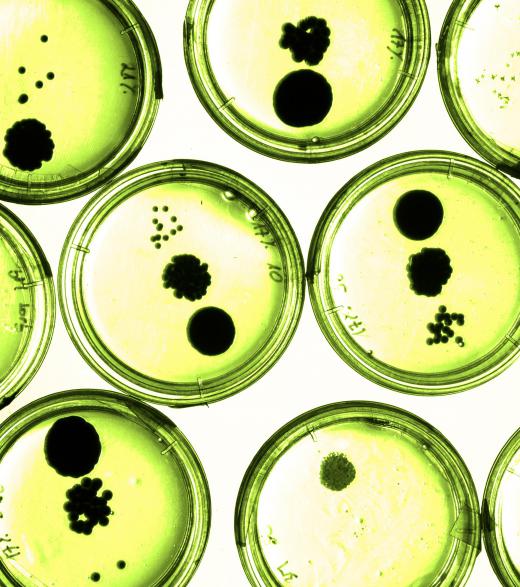What is a Capillary Tube?
A capillary tube is a very thin tube made of a rigid material, such as plastic or glass. The tubes are used to collect samples of liquids, which will flow up into the tubes against the effects of gravity in a process called capillary action. They are commonly used in medical and research fields to extract very small samples of liquids to be analyzed, such as blood samples for diabetics, or to transport them to other devices, such as Petri dishes or microscopes, for further study or experimentation.
The thickness in the opening of capillary tubes varies from application to application, with the determining factor being the density or weight of the fluids to be drawn in. There are many sizes of pre-manufactured tubes for use with specific applications, such as drawing blood to test for blood sugar levels. In research applications, researchers will often heat the center of a glass tube to near its melting point. They then pull the ends, stretching the center into a very fine tube suitable for their immediate needs and, once the glass cools, break it in the middle to create a custom tool.

All of these tubes function through a process called capillary action. This process uses two physical forces — surface tension and adhesion — to counter the effects of gravity and draw a sample up. Surface tension is the forming of a barrier at the surface of a fluid created by the force that it takes to separate individual molecules of the fluid from one another. This force can be observed in a drinking glass, which can be filled with water to a level slightly more than the volume of the glass, allowing it to rise above the rim. The water remains above the glass because the force required to separate the water molecules at the surface is greater than the force gravity is exerting on the water above the rim of the glass.

Adhesion aides in capillary action by creating a mutually attractive force between the liquid and the tube itself. In the example of a glass of water, water is attracted to, and adheres to, the rim of the glass, creating a boundary for the surface of the water. This is what keeps the water in the glass while the surface tension determines how high the water can rise above it.

Capillary tubes are, by nature, very thin. Because of this fact, there is a high amount of adhesion around the inside of the tube, which creates a surface area at the top and bottom of a liquid in the tube. As a result, when a liquid encounters one, it is drawn up into the tube by the forces of adhesion, creating a surface with a specific surface tension that remains intact due to the adhesion of the sides of the tube. The liquid will continue to rise up the tube until the weight of total mass of all the liquid in the tube exceeds the surface tension at the bottom.
AS FEATURED ON:
AS FEATURED ON:













Discussion Comments
If the known capillary rise of a tube is .5cm and we break the tube at .2cm, will the water or liquid rise out of the tube and spill out?
Post your comments